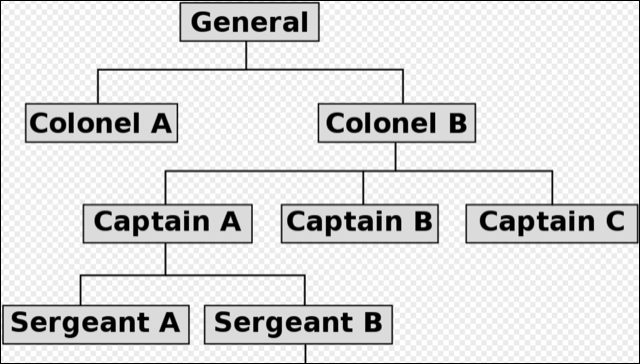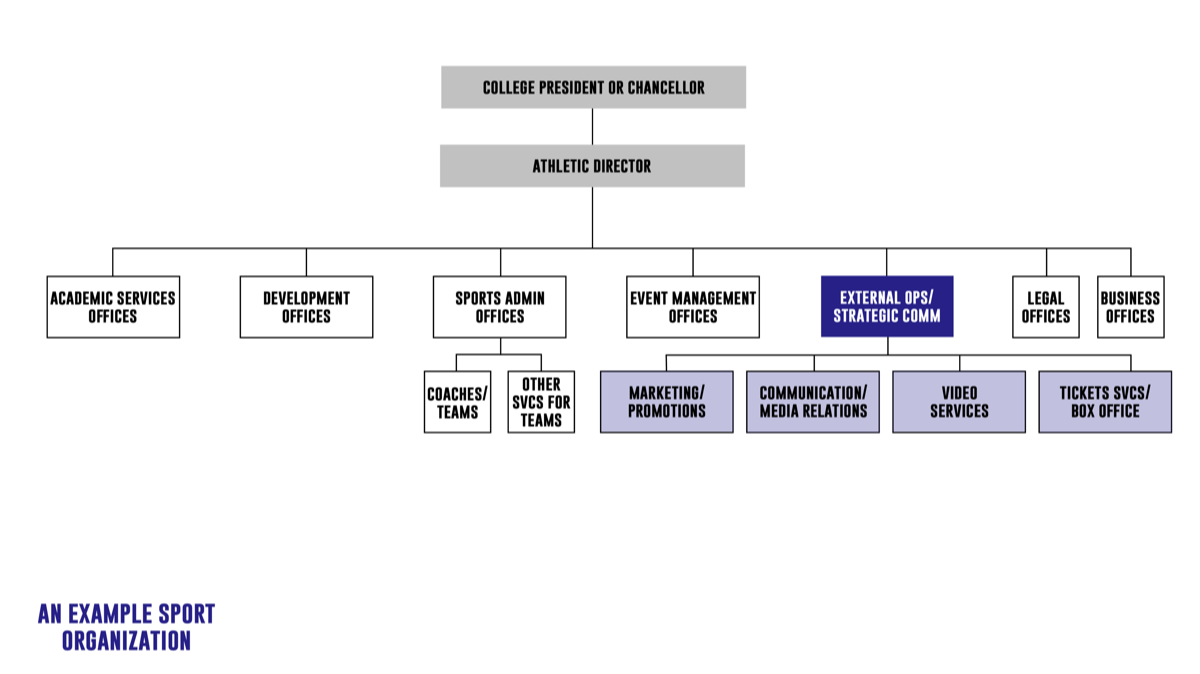Sport Organizations
A sport organization (SPORG) is an organization that conducts business within the sport industry. The sport industry is massive so we're going to consider ways to segment as we consider common types of sport organizations. (Please note the SPORG is NOT an industry term, it's just a simpler abbreviation that I use.)
Before we dive into sport organization's mission and structure, let's consider types of sport products as one way to segment the sport industry.
Before we dive into sport organization's mission and structure, let's consider types of sport products as one way to segment the sport industry.
Sport product types
Next, let's consider the products that sport organizations typically offer. There may be outliers, but basically, they can all be grouped into one of these categories:
-
GoodsTangible goods (t-shirts, gear, shoes, balls, bats, etc.)
Intangible goods (people, experiences)
While people who compete are tangible, their performances as they compete are not. A consumer is paying for the performance. Experiences may have tangible parts to them, such as the tickets purchased to an event, but the experience (watching the event or playing a round of golf) is not tangible. -
ServicesConsulting or expertise areas (agronomy, architecture, crisis communication, medicine, software/IT, tickets, the possibilities might be endless)
-
PlacesA sporting venue (arena, golf course, health club, stadium)
A virtual space (sports media enterprises, video games, websites)
An academic model of sport organizations
From: Pedersen, Laucella, Kian & Geurin (2017), Strategic Sport Communication, 2nd. Ed. Human Kinetics, Champaign, Ill., Meek's (1997) model is particularly useful and serves our purposes well:
-
A. Sport entertainmentTeam or individual competitive sports and ventures, events (tournaments), etc.
-
B. Sport products or servicesEquipment, manufacturing, venues (i.e. a golf course), ticket services, media outlets (i.e. ESPN), etc.
-
C. Sport support organizationsLeagues, conferences, associations, law firms, etc.
Sport organizations types
Here are a list of categories of sport organizations. The lists under each category is NOT meant to be exhaustive, only to illustrate how many kinds of sport organizations there are and where we might group them using Meek's (1997) model.
-
College sports teams (A)Division I athletics departments and teams
Division II athletics departments and teams
Division III athletics departments and teams
NAIA athletics departments and teams -
Professional sports teams (A)Auto racing teams
AVP teams, pro teams from all other countries
MLB teams, minor league teams, independent league teams
MLS teams, international soccer teams, Manchester U anyone?
NBA teams, pro teams from all other countries
NFL teams, pro teams from all other countries
NHL teams, pro teams from all other countries
NPF teams
WNBA teams
WPSL teams
… and on and on -
School districts (C)High schools (U.S.)
Junior high schools (U.S.)
Elementary school (U.S.)
International club team sport organizations -
Professional leagues (C)AVP
LPGA
MLB
MLS
NASCAR
NBA
NFL
NHL
NPF
PBA
PGA
WNBA
WPSL
… and on and on -
Collegiate sports conferences (C)ACC
Big 10
Big 12
Big West
… and on and on -
Other sports governing bodies (C)High school governing bodies
International Olympic Committee (IOC)
National governing bodies (NGBs, FIFA)
National Collegiate Athletic Association NCAA (also, NAIA)
Officials organizations (Pro and amateur sport officials have governing agencies, too)
Youth sports leagues (AYSO, Little League, etc.)
… and on and on -
Sports media companies/properties (B)CBS Sports
ESPN
Fox Sports
Garbage time with Katie Nolan (Mike & Mike, and all the like) Yes, that was an intentional rhyme.
Sports Illustrated
… and on and on -
Sports apparel, equipment, games, gear, nutrition, fantasy websites (B)Dick's Sporting Goods
EA games (yes, video games count if they're based on other sports)
Gatorade
Nike
Rawlings
Titles
Under Armour
… and on and on (OMG, there could be so many of these) -
Sports venues (B)Arenas
Golf Courses
Health Clubs
Hotels in Las Vegas (hello, boxing?)
Racetracks (for auto, horses or anything where something races and people watch or compete, OMG)
Stadiums
Tennis Courts
… and on and on -
Municipal government agencies (what?) (B or C)Parks and recreation departments in cities (aka municipalities) (B)
University (public and private) recreation departments and facilities (B)
Maintenance operations (the folks that mow the grass for co-ed slo pitch league's parks, for example) (C) -
Expertise-based consulting businesses (C)Agents
Architects
Athletic training/sports medicine
Crisis communications (generally handled by external PR firms)
Data analysis and research firms
Graphic design
Issues consulting
Lawyers
Software/IT
Sports books/gambling operations
Ticket agencies
Video
Websites
… and on and on -
Sport foundations (C)"Do Good" organizations that center on sports (found at all levels of sport participation)
-
Professional sports people are SPORGs too (A)Usain Bolt
Bryce Harper
LeBron James
Peyton Manning (even after they retire, they might still be SPORGs)
Lionel Messi
Danica Patrick
Michael Phelps
Jordan Speith
Kerri Walsh Jennings
Serena Williams
… and on and on
When you look at this list of types of sport organizations, you should be able to see not only how vast the sport industry is, but how hard it is to create a "simple academic" model that easily categorizes them. Good news for students, there are many more ways to work in the sport industry than many people think. And, all of these organizations have communication roles.
What's an Org Chart and why does it matter? (Material below is for MCOM 5380 only)
How does an organization visually show what their structure is, once they've formed it? Most use a tool called an organizational chart (org chart). It usually makes sense for people just beginning to think about "org charts" to look at a military example because of its obvious hierarchy: A General is a higher rank than a colonel.
Military example
For more information about org charts, here's a LINK to the Wikipedia page where the image originated.
Military example
For more information about org charts, here's a LINK to the Wikipedia page where the image originated.

For MCOM 5380: Read Chapter 9 from Pressbook's Fundamentals of Business OER text.
Sport Organization Example
Click to view "An example SPORG" by a list of typical offices that might represent how a college athletic department is structured.
